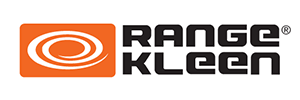Keep Your Gas Range and Renew It, Too!
We're here to fill you in if you have yet to hear of the rising controversy with gas ranges. To curb rising cases of childhood asthma, the current administration suggested Americans remove gas ranges from their homes.

Why the controversy? According to Harvard Health Publishing of Harvard Medical School, cooking with Gas produces nitrogen dioxide, which releases microscopic airborne particles known as PM2.5. Both Nitrogen Dioxide and PM2.5 are lung irritants. In addition, according to an analysis of observational research, children living in households that use gas stoves are more likely to have asthma. Yet, observational studies cannot prove that cooking with a gas range is the direct cause of an asthma diagnosis.
We know gas ranges are here to stay. We love cooking with gas ranges; there are so many benefits of using a gas range. For example, cooking with Gas allows you to adjust the stove top heat levels instantly, offering better temperature control while cooking. Flames disperse along the sides and bottom of pans providing uniform cooking results. In addition, users can char foods over an open flame, which is a popular way to heat tortillas! Finally, ovens preheat faster using Gas as an energy source instead of electricity.
Gas ranges are also easy to clean! To clean and refresh your gas range, start by ensuring the range is turned off and wait until it's cool to the touch.
1) If your range features removable knobs, carefully remove them (so as not to turn them on).
2) Remove stove grates, burner caps (which protect the burner base below), and drip pans (if applicable). Set the drip pans off to the side.
3) Wipe the burner caps with a soft sponge, then rinse using hot water. Finally, set them aside to dry. (To clean the burner base, refer to the appliance manufacturer's instructions).
4) Rinse off the grates in the kitchen sink to release food crumbs. Mix a concoction of equal parts dish soap and baking soda; the mixture should be slightly foamy - if it's not, add a splash of water and stir. Place the grates in the sink and scrub them with a non-abrasive sponge, coating each grate in the mixture you've whipped up.
4) Allow the grates to soak for 15 minutes.
5)Wipe the stovetop down with a warm, damp rag. Next, create a cleaning solution using 1/2 tsp. of dish soap (which contains a degreasing ingredient) with 2-3 cups of water. Transfer the liquid into a spray bottle and spritz your stovetop. If the stovetop has baked-on messes or grease, allow the solution to sit for 5-10 minutes; then scrub with a non-abrasive sponge and use your Scrape & Kleen to scrape away any stuck-on messes.
6) Wipe the range top using a warm, damp cleaning cloth to remove the cleaning solution. Repeat steps 5 and 6 if the range top is still dirty.
7) Spritz the appliance panel with cleaning solution, then wipe it down with a damp cloth and replace the range knobs.
8) Rinse off the grates, then pat them dry using a clean towel.
9) Replace the drip pans with Range Kleen's Heavy Duty Chrome or Porcelain Drip Pans. Next, put the burner caps back on to protect the burners.

10) Finally, replace the stove grates and pat yourself on the back for a well-done job!

